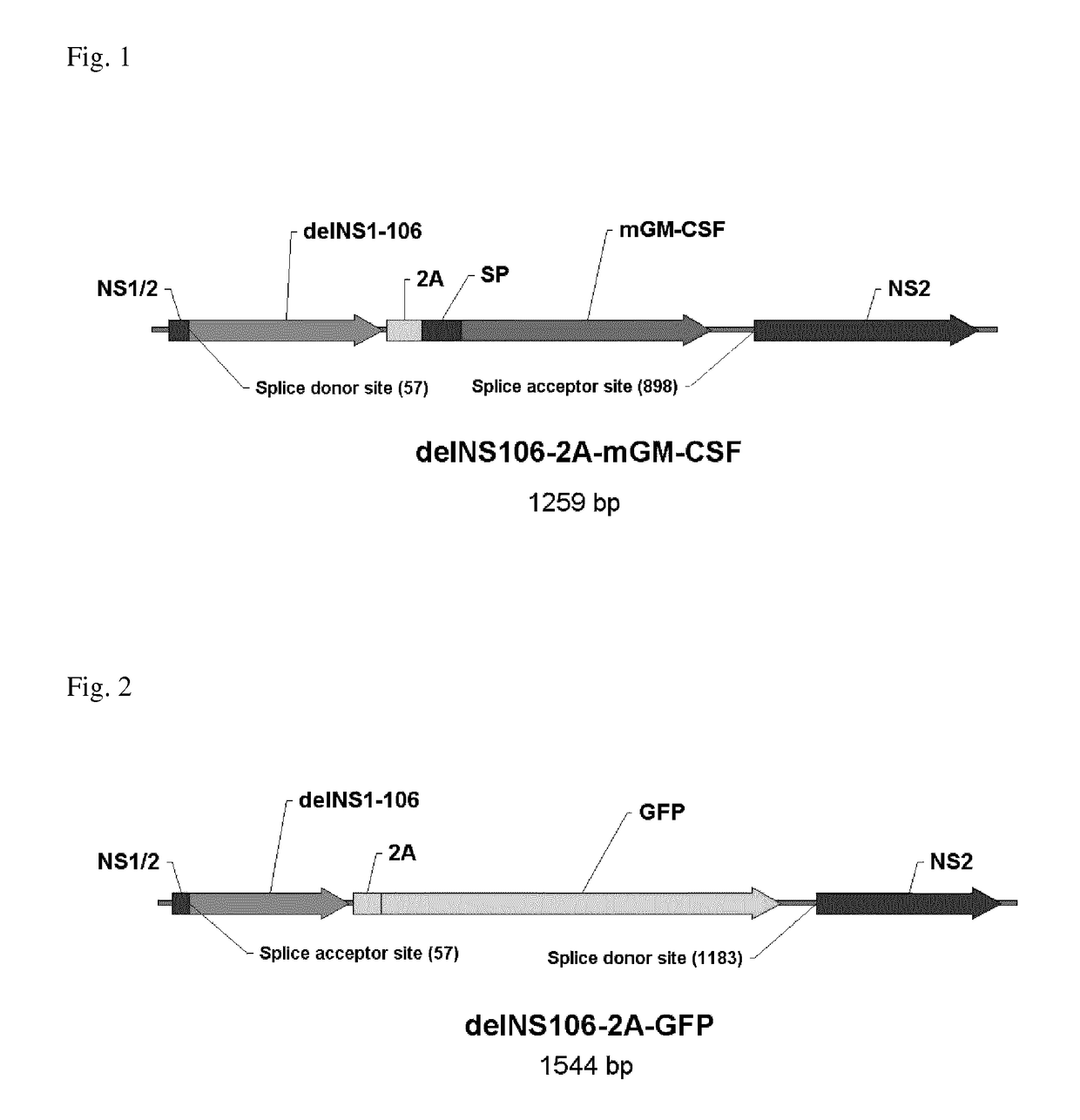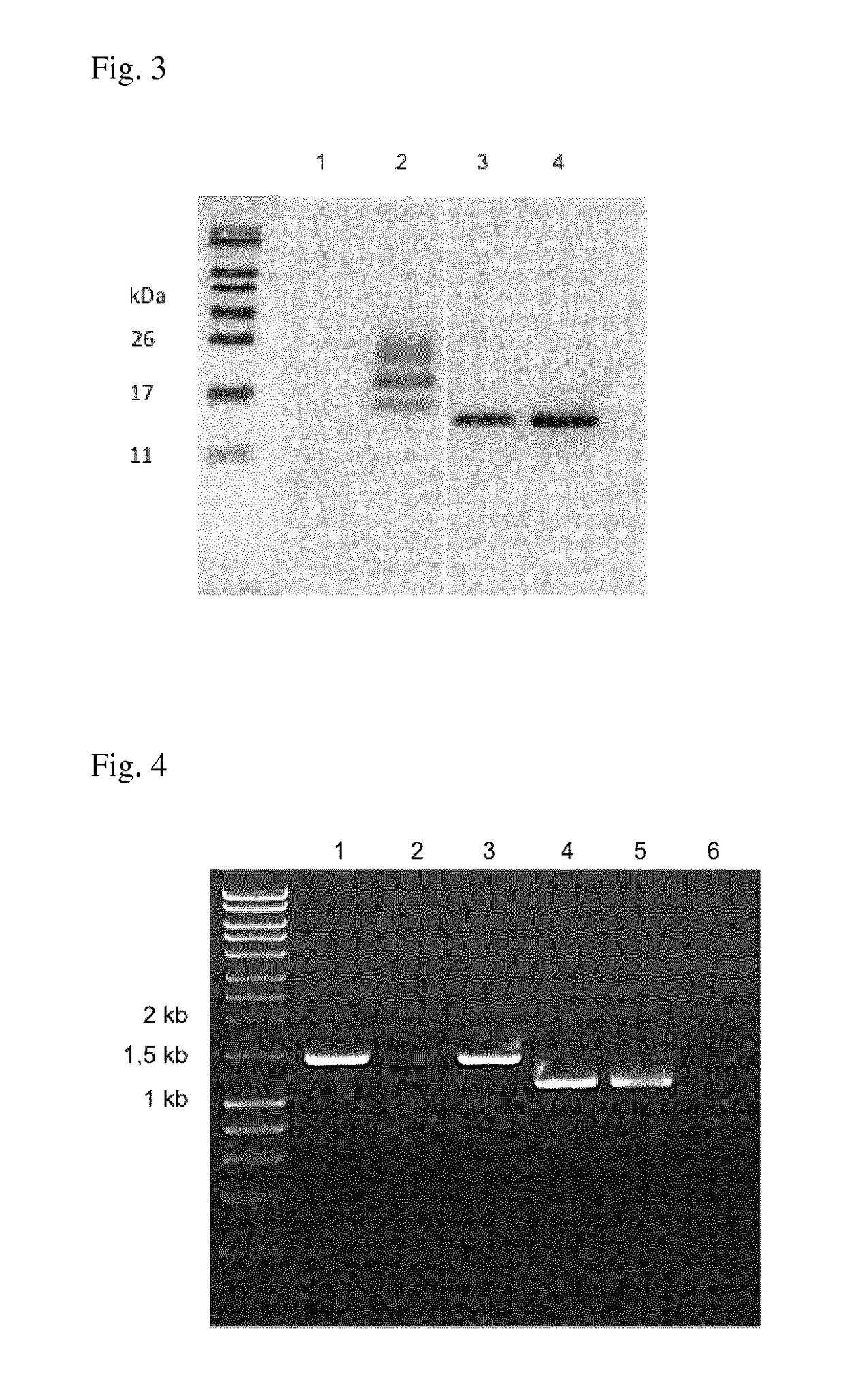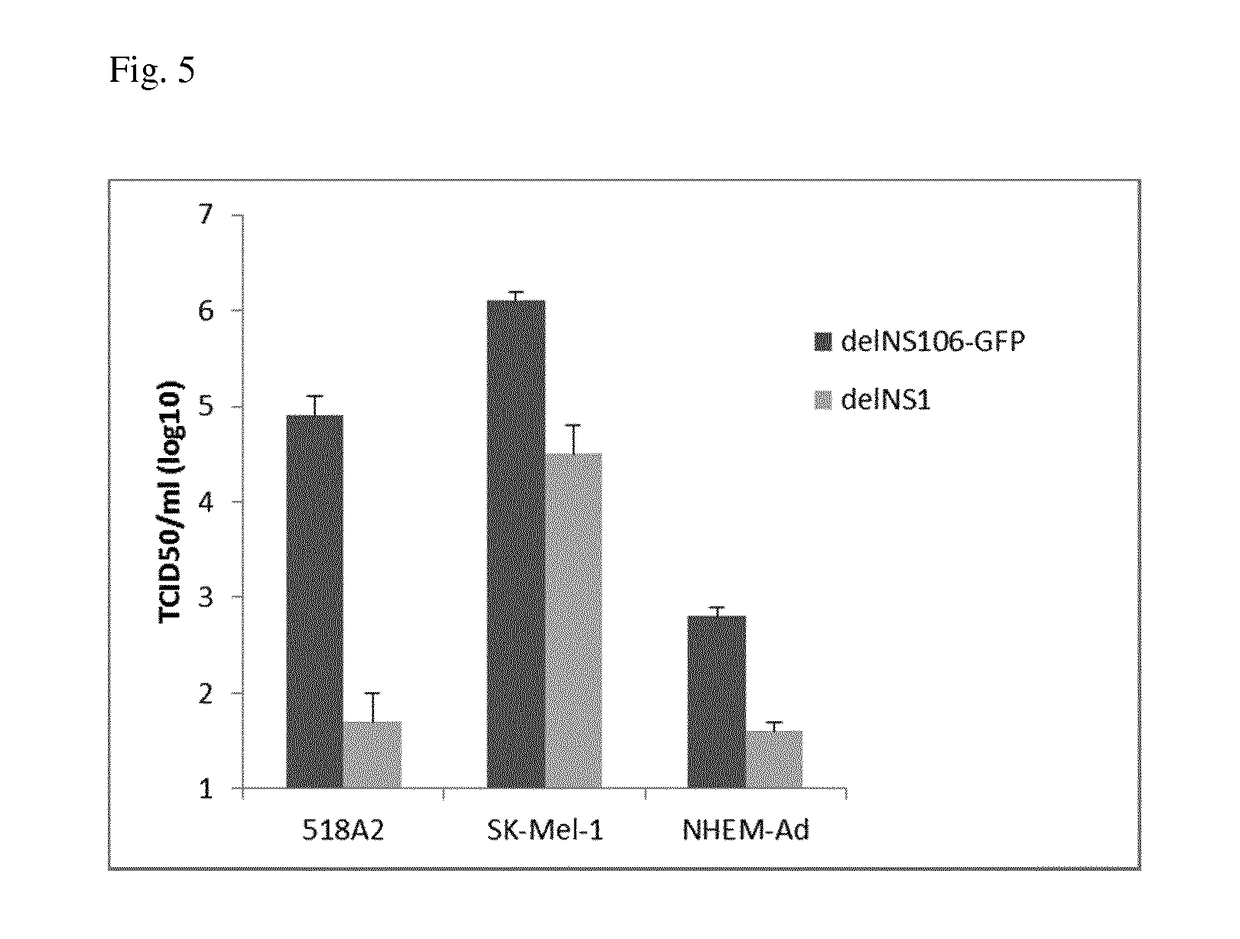Influenza virus vector for virotherapy
a technology of influenza virus and virotherapy, which is applied in the field of new recombinant influenza virus vectors, can solve the problems of insufficient attenuation and replication deficiency in normal cells, and achieve the effect of constant and unmet needs and sufficient attenuation
- Summary
- Abstract
- Description
- Claims
- Application Information
AI Technical Summary
Benefits of technology
Problems solved by technology
Method used
Image
Examples
example 1
Cells and Viruses
[0142]Human melanoma cell lines SK-MEL 28 (ATCC, Manassas, Va.) and 518 A2 are grown in DMEM (Gibco BRL, Rockville, Md.) supplemented with 10% FCS (Gibco BRL). The human melanoma cell line SK-MEL 1 (ATCC) is cultured in minimum essential medium (MEM, Eagle) (Gibco BRL) containing 10% FCS, 0.1 mM non-essential amino acids, 1.0 mM sodium pyruvate and Earle's BBS. The primary melanocytic cell line NHEM (Szabo Scandic, Vienna, Austria) is grown in melanocyte growth medium (Clonetics Cambrex, East Rutherford, N.J.). Vero cells adapted to grow on serum-free medium (ATCC) are maintained in serum-free AIMV medium (Gibco BRL). Wildtype influenza virus contains a transfected NS wt gene segment and encodes a wild-type NS1 protein of 230 amino acids. NS1-106 contains an NS gene segment with the first 106 C-terminal amino acids. The delNS1 virus contains a complete deletion in the NS gene segment. For propagation of the viruses, Vero cells are infected at a multiplicity of infec...
example 2
[0147]The generation and characterisation of a mouse GM-CSF (Granulocyte-Macrophage Colony Stimulating Factor)-expressing Influenza A H1N1 NS1 deletion virus is described. The interferon antagonist NS1 was C-terminally truncated to 106 amino acids, thereby rendering the virus attenuated in interferon-competent cells.
[0148]The open reading frame of murine GM-CSF was fused to the C-terminus of NS106 via a 2A peptide derived from the Foot-and-mouth disease virus (FIG. 1). Upon translation of the NS106-2A-mGM-CSF fusion protein the self-cleaving 2A peptide liberates mGM-CSF allowing it to be secreted through the ER-Golgi pathway. Alternatively, the ORF of green fluorescent protein (GFP) was inserted into the delNS106 segment (FIG. 2).
[0149]The delNS106-2A-mGM-CSF virus and the delNS106-2A-GFP virus were generated by eight plasmid transfection of Vero cells.
[0150]The chimeric delNS106 segments proved to be genetically stable over seven consecutive virus passages in Vero cells as assessed...
example 3
Cells
[0169]Human melanoma cell lines SK-MEL 1 (ATCC, Manassas, Va.) and 518 A2 were grown in DMEM / F12 medium (Invitrogen) supplemented with 10% FCS (Invitrogen) and 2 mM GlutaMax I supplement (Invitrogen) at 37° C. and 5% CO2.
[0170]Adult normal human epidermal melanocytes (NHEM-Ad; Clonetics) were grown according to the manufacturer's instructions in supplemented MBM-4 basal medium (Clonetics) instructions at 37° C. and 5% CO2.
[0171]Vero cells adapted to grow on serum-free medium (ATCC) were maintained in serum-free OptiPro medium supplemented with 2 mM GlutaMax I supplement.
Virus Generation
[0172]For virus generation seven pHW2000 derivatives (Hoffmann et al. 2000, Proc Natl Acad Sci USA. 97:6108-13) containing the segments PA, PB2, M and NP from Puerto Rico / 8 / 34, PB1 from A / Texas / 1 / 77, and HA, NA from A / New Caledonia / 20 / 99 H1N1, as well as a protein expression plasmid coding for Influenza A PR8 NS1 (pCAGGS-NS1(SAM); (Salvatore et al. 2002, J Virol. 76:1206-12)) were used together w...
PUM
| Property | Measurement | Unit |
|---|---|---|
| molecular weight | aaaaa | aaaaa |
| concentration | aaaaa | aaaaa |
| size | aaaaa | aaaaa |
Abstract
Description
Claims
Application Information
 Login to View More
Login to View More - R&D Engineer
- R&D Manager
- IP Professional
- Industry Leading Data Capabilities
- Powerful AI technology
- Patent DNA Extraction
Browse by: Latest US Patents, China's latest patents, Technical Efficacy Thesaurus, Application Domain, Technology Topic, Popular Technical Reports.
© 2024 PatSnap. All rights reserved.Legal|Privacy policy|Modern Slavery Act Transparency Statement|Sitemap|About US| Contact US: help@patsnap.com










